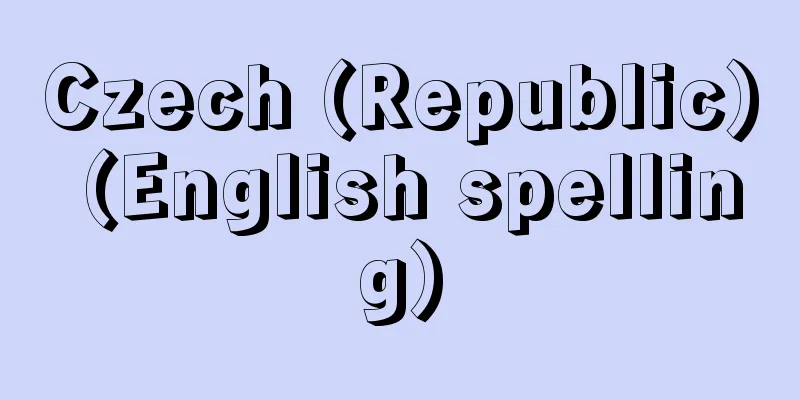Kitajima Kengyo

|
[raw]? [Died] Genroku 3 (1690). September 4th. Kyoto? Koto performer and composer. His castle name was Joharu. He was a disciple of Yatsuhashi Kengyo, the founder of modern koto music. He was appointed as a kengyo on January 1, 1645 (Shouho 2). The Matsudaira Yamatonokami Diary by Matsudaira Naonori, a feudal lord in the early Edo period, records that in addition to koto kumiuta, he also performed Heikyoku and shamisen kumiuta (→ shamisen honte) at the Matsudaira residence in Edo during the Manji and Kanbun eras (1658-1673). According to the Yatsuhashi school's instruction book, he modified the kumiuta technique and passed it on to his disciple Ikuta Kengyo, but he died shortly after. It is also said that the square-shaped claws of the Ikuta school were also invented by Kitajima, but he did not announce them out of respect for his teacher Yatsuhashi. However, both were later performed as Ikuta school. He served as the 34th Shokukengyo (General Inspector) from September 19, 1689 (Genroku 2) until his death the following year. This shows that in the society of this art, sokyoku, along with heikyoku and sangen, had established a foundation as a professional occupation for blind musicians. His compositions include the koto group songs "Akashi," "Sue no Matsu," and "Utsusemi," as well as "Hagoromo" and "Wakaba" (some say that they were composed by Makino Kengyo), and "Omoigawa" (some say that they were composed by Ikuta Kengyo). He is also said to have arranged "Rokudan no Shirabe." Source: Encyclopaedia Britannica Concise Encyclopedia About Encyclopaedia Britannica Concise Encyclopedia Information |
|
[生]? [没]元禄3 (1690).9.4. 京都? 箏曲家,作曲家。城名(じょうな)は城春。現行箏曲の開祖となった八橋検校の弟子。正保2(1645)年1月1日検校に登官。江戸時代前期の大名松平直矩による『松平大和守日記』には,万治・寛文年間(1658~1673)江戸の松平邸で箏組歌のほか兼業でもあった平曲,三味線組歌(→三味線本手)も演奏したことが記されている。八橋流の伝授書によれば,組歌の手法を改め,弟子の生田検校に伝えてほどなく亡くなり,また生田流の角型の爪も北島の創案といわれるが,師の八橋に遠慮して発表しなかった。しかし,のちにいずれも生田流として行なわれるようになったという。元禄2(1689)年9月19日より翌年没するまで第34代職検校(総検校)を務めた。箏曲も当道社会において,平曲,三弦とともに盲人音楽家の専業としての基盤がつくられたことを示している。作曲に箏組歌『明石』『末の松』『空蝉』,および『羽衣』『若葉』(牧野検校説もある),『思川』(生田検校説もある)がある。また『六段の調』を編曲したともいわれている。 出典 ブリタニカ国際大百科事典 小項目事典ブリタニカ国際大百科事典 小項目事典について 情報 |
<<: Northern Moth - Northern Moth
Recommend
Ashide Utae - Sing with your feet
...Uta-e paintings have a playful character in th...
Qawwali
A religious hymn of Muslims in India, Pakistan, an...
Honor guard - Gijo
〘noun〙① Ceremonial weapons and equipment. Practica...
McDonnell Douglas Corp.
One of America's leading defense contractors. ...
Dive bomber - Dive bomber
A special bomber equipped with a dive-stopping bla...
Poephila acuticauda (English spelling) Poephila acuticauda
…[Nakamura Toru]. … *Some of the terminology that...
Bǎlgaria (English spelling) Balgaria
…Official name = Republic of BulgariaRepublika Bâ...
Matsuzawa Hospital
A Tokyo Metropolitan psychiatric hospital. It was...
Space Spirit - Uchuurei
…However, rather than being essentially a modern ...
Deposit - Kyotaku
Depositing money, securities, or other items with...
Gold ring - kumquat
〘noun〙① A ring made of gold. Also, a ring of golde...
Robinson, E.
...It covers a long period from prehistoric times...
Malayalam (English spelling)
...There is a considerable movement of population...
Albergo (English spelling) [Italy]
A clan association of the city's nobility that...
Theory of industrial organization
When examining industrial activity, the term indu...









